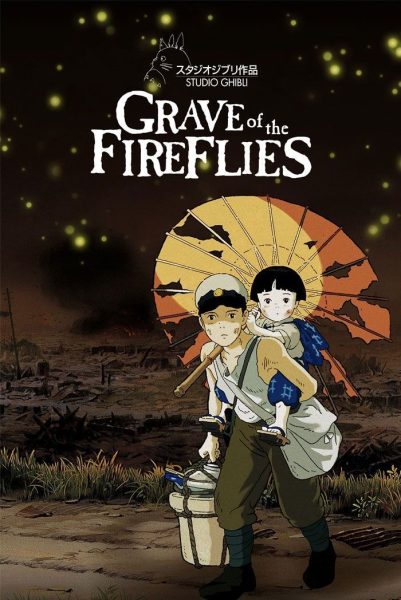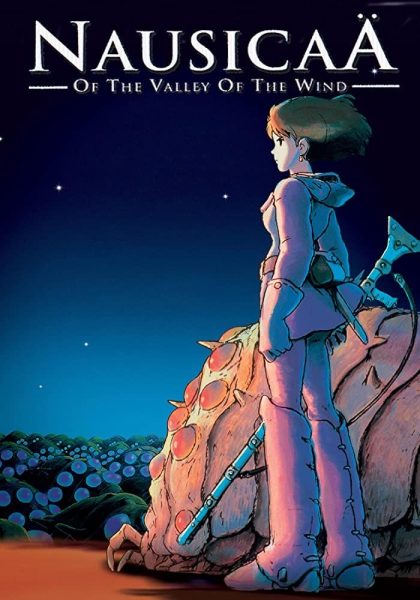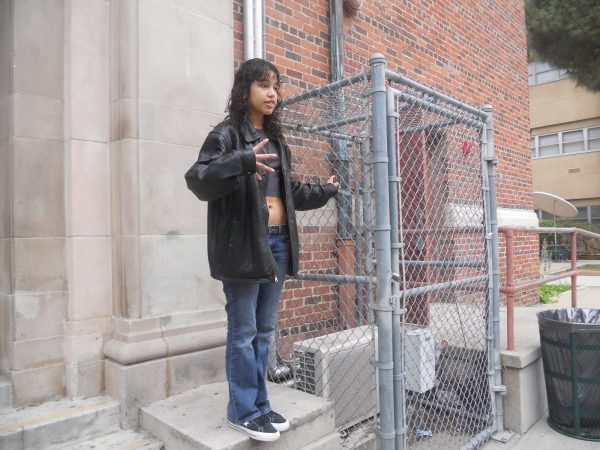Hayao Miyazaki is a prominent and renowned Japanese filmmaker, animator, manga artist, and co-founder of Studio Ghibli, a world-renowned animation studio. Born in 1941, Miyazaki has had a profound impact on the world of animation due to his childhood in WW2-stricken Japan, creating enchanting and imaginative worlds that have captivated audiences globally. His unique storytelling, characterized by rich narratives, strong character development, and themes of environmentalism and pacifism, sets him apart as a master storyteller. His animations of intricate nature backgrounds are awe-inspiring, as many of his films are hand-drawn before animation. A few of his most celebrated works include “Howl’s Moving Castle,” “My Neighbor Totoro,” and “Princess Mononoke,” each contributing to his legacy as one of the most influential figures in the animation industry. Throughout a career spanning over 60 years in the animation industry and filmography that includes at least 36 productions, Hayao Miyazaki has announced his retirement on multiple occasions. However, each time he has surprised fans by returning with a wealth of creative ideas for new films. Despite the announcements of stepping back, Miyazaki’s passion for storytelling and his boundless imagination seem to consistently draw him back into the world of animation, delighting audiences with fresh and captivating cinematic experiences. His dedication to hand-drawn animation and his ability to explore profound themes in his films have earned him international acclaim and a devoted fan base. Hayao Miyazaki’s cinematic contributions have earned him both critical acclaim and global recognition, boasting an impressive collection of over 82 awards and 52 nominations for his remarkable work. His outstanding animated productions have positioned him as one of the most accomplished filmmakers in the history of animation, with widespread admiration for the depth of storytelling, unique visual style, and the profound impact of his films on audiences worldwide. Miyazaki’s ability to transcend cultural boundaries and resonate with diverse audiences further solidifies his legacy as a cinematic master in the realm of animation.
Top Ghibli Movies:
We ranked 10 Studio Ghibli films and highlighted three honorable mentions based on criteria such as themes, cinematography, run time, casting, personal enjoyment, and cohesion of the movie’s elements. Our evaluation delved into the depth of each film, considering the nuanced interplay of themes, characters, and settings. Our rankings aim to capture the essence of Studio Ghibli’s diverse and acclaimed filmography through a multifaceted lens.
1. Howl’s Moving Castle

“Howl’s Moving Castle” stands as one of Miyazaki’s most acclaimed films, with over 14 awards and 20 nominations. Hayao Miyazaki’s masterpiece unfolds seamlessly in both subbed and dubbed versions, with English voice actors impeccably embodying the characters. The captivating story weaves a beautiful and engaging storyline, skillfully portraying characters who embody both confidence in their abilities and crippling insecurities. Yet, what truly elevates the viewing experience, in our opinion, is the movie’s breathtakingly intricate landscapes and animations, making it a visual epiphany for the senses. The story beautifully traces the unfolding of love and trust between the two main characters, Sophie and Howl. Through a series of poignant moments and captivating scenes depicting love and friendship, this film navigates the intricacies of love, friendship, and trust, beautifully capturing the essence of love and friendship. “Howl’s Moving Castle” is not merely a film; it’s a symphony of storytelling, character depth, and visual splendor that undoubtedly secures its position at the pinnacle of our rankings that resonates with the universal themes of love and the value of self principle.
2. The Wind Rises

“The Wind Rises” is a heartbreaking tale of war, love, and the pursuit of dreams under oppression. The film follows Jiro, a man who designed planes for Japan in WW2. Jiro is determined to be able to design the beautiful plane designs that come to him in dreams, to make up for his failed childhood dream of becoming a pilot due to his nearsightedness. Something to notice as you watch this movie is the beautiful design of the aircraft, which is a well-known passion of Miyazaki. Smile, cry, and rejoice in this masterpiece.
3. Princess Mononoke

“Princess Mononoke” stands as a visually breathtaking and thematically rich cinematic achievement, delving into the vital issues of environmental conservation, loss of innocence, and the clash between development and the preservation of the natural world. The story centered around the young Emishi prince Ashitaka and his involvement in a conflict between forest gods and destructive humans, unfolds against a backdrop of stunning animation and scenery. Viewers and critics alike hail this film as a true masterpiece, where Hayao Miyazaki’s narrative brilliance and visual artistry seamlessly converge to create a compelling and thought-provoking cinematic experience. With its evocative storytelling and the seamless integration of gorgeous animation, “Princess Mononoke” not only captivates the audience but also serves as a poignant reminder of the delicate relationship between humanity and nature as depicted by the relationship between Ashitaka and San. This cinematic gem remains a timeless exploration of environmental consciousness, leaving a lasting impact on both animation enthusiasts and those seeking profound narratives.
4. My Neighbor Totoro

As one of the most iconic films in Miyazaki’s filmography, “My Neighbor Totoro” stands as a behemoth in popular culture and film history. The story depicts the experience of two girls, Satsuki and Mei, who while adjusting to their new life in the country and a mother in the hospital, encounter forest spirits that bring them joy in this trying time. Childhood nostalgia pumps through the veins of this movie. It exudes the feeling of childlike wonder, unlike any other Miyazaki film. With its use of minimal fantastical elements, realism, and fantasy are blended seamlessly in this heartwarming and heart-wrenching plot. This is a must-watch if you are looking to get into the filmography of Miyazaki or are a film lover in general.
5. Grave of the Fireflies

“Grave of the Fireflies” stands out as an exceptional movie, with profound themes that might be challenging for sensitive viewers due to triggers including death, war, and child suffering. The film masterfully captures the post-Hiroshima/Nagasaki bombings era in Japan, vividly depicting the lives of innocent civilians. It’s a gut-wrenching cinematic masterpiece that perfectly conveys the devastating impact of war on innocent lives with themes of loss and survival. The characters Seita and Setsuko captivatingly depict the toll of war on childlike innocence, showcasing Seita’s transformation from a child burdened by adult responsibilities after his mother’s death. The animation is visually stunning, seamlessly complemented by a beautiful classical soundtrack that enhances the emotional depth of the movie’s pivotal scenes.
6. The Boy and the Heron (How Do You Live?)

Miyazaki’s latest film, “The Boy and the Heron”, is one of his best. From the jump, you can tell this is a very personal film for him. The Second World War was incredibly important to Miyazaki. It shaped his life when he was young and it shapes his art now that he’s old. Mahito’s mother dies in the war. The death of his mother was also a life-changing part of Miyazaki’s own life story. This is a film all about family. Mahito travels through time and space because he has the chance to see his mother again. It feels like Miyazaki’s beautiful way of saying that he would do anything to see his mother just one more time. It makes the ending, Mahito and his family moving on many years after the war, all the more touching. The film follows Joseph Campbell’s simple but effective “hero’s journey” story structure. It evokes a familiarity from some of his older works along with what he would’ve watched and read when he was young. The cast is full of stars and they are all amazing. The art is beautiful, the animations are smooth, and the character designs are all very fitting whether they are supposed to look disgusting or a visual marvel. Miyazaki came out of retirement just to show us all that he’s still got it, he does and if he doesn’t get that Oscar he’s nominated for, we’ll be the first to tell you he was robbed.
7. Spirited Away

“Spirited Away” is an artistic triumph, and a movie Miyazaki simply had to make because when he was just having fun creating a world he realized it would be irresponsible to let it go to waste. It goes to show that if nothing else, he has a true gift for creating worlds. Spirited Away is a film that has a very loose plot because it is much more interested in the characters he’s created and the themes they convey. It’s a very thematically rich movie, but my favorite themes are those of identity and the importance of growing up. The whole adventure teaches Chihiro that she needs to grow up. One of the antagonists, Granny, has a giant baby, Boh, whom she is very overprotective of. A recurring theme in this film is the side characters such as Boh and Granny to represent the film’s themes. The movie’s main plot involves Chihiro losing her identity and becoming “Sen.” Unsubtly, one of the other antagonists is a demon-like creature called “No Face.” The river spirit, much like Chihiro, lost his identity in the bathhouse. These themes make the film’s ending even more satisfying because the climax feels like all these themes come to a head. It feels like the typical Joseph Campbell story structure, but it works perfectly for this story. The movie is also beautifully crafted. Every frame could be hung on my wall and the voice performances are beautiful.
8. The Tale of Princess Kaguya

“The Tale of Princess Kaguya” is a beautiful movie. The story follows Kaguya, who before growing up was the size of a finger. The moment she becomes normal size, multiple men begin to propose to her, and to all of them she says no. This movie explores the female experience and pressure to settle down through Kaguya’s unwillingness to conform to the status quo. The soft animation complements the vibe of the film and creates a unique experience within Studio Ghibli’s filmography.
9. Kiki’s Delivery Service

This film is a childhood classic for many many people and deservedly so. “Kiki’s Delivery Service” is a stunning monument to Miyazaki’s artistry. It not only is great for kids, but can be enjoyable for adults as well. The film follows Kiki, a young witch, who at the age of 13, must complete a mandatory year alone to discover and hone her magic. You can get lost in her childlike wonder as she discovers the world all on her own. As always, the visuals keep your eyes locked on the screen. Fun fact, the fictional city of Koriko was based on Miyazaki’s travels to Stockholm.
10. Ponyo

A beautiful film about rebellion, nature, and family. “Ponyo” is a film that takes you on an emotional ride that will rock you like the character Lisa’s driving up the mountain pass. The familial themes hit very hard. Ponyo’s strained relationship with her father and her compulsion to rebel against his overprotectiveness is beautiful. The effect it has on the world is incredibly creative. It brings an interesting perspective on how personal choices can affect the world. It’s especially compelling because Sōsuke’s father is absent for the same reason Ponyo’s is very close because that’s what he thinks is best. This makes their connection even more beautiful. The world is also beautifully animated, the only thing more beautiful than the world is the adorable character designs. It makes the characters more empathetic in a way and that makes the film’s climax more emotional. This goes hand in hand with the beautiful performances from an all-star cast to make the perfect kids’ movie.
Honorable Mentions:
1. When Marnie Was There

Despite not being directed by Miyazaki, “When Marnie Was There” is a poignant exploration of friendship, self-discovery, and the mysterious realms of memory. Based on Joan G. Robinson’s novel, the film follows the introspective and artistic Anna as she spends a transformative summer in a seaside town. The narrative beautifully unfolds as Anna discovers the enigmatic Marnie, a girl who seems to exist beyond the boundaries of time and reality. The film’s emotional depth is enhanced by its stunning hand-drawn animation and a hauntingly melodic soundtrack. “When Marnie Was There” is a captivating journey that not only tugs at the heartstrings but also delves into the complexities of human emotions and the enduring power of genuine connections.
2. From Up On Poppy Hill

“From Up on Poppy Hill” is one of the most “sweet” and “chill” Studio Ghibli films. From the get-go, you get the vibe that you can kick back, relax, and take in the atmosphere. The art style, locations, and environments are gorgeous. This film focuses on the relationships between the characters and the problems they represent. Umi’s relationship with her family is strained because she has to be the house’s secondary maternal figure since Yūichirō died before the events of the film. Her relationship with Shun is always hanging in the balance. At the beginning of the movie, she doesn’t even like him and later she thinks they’re related. This plot line wraps up in a way that is so shocking that telling you here would be a disservice. This film is notably not directed, only written, by Miyazaki, which adds a kind of meta element to the themes of family because it is directed by his son Goro. The brother-sister plot line is especially unfortunate because it gives an otherwise beautiful film a bad rap.
3. The Secret World of Arrietty

“The Secret World of Arrietty” is an enchanting and visually stunning animated film that brings to life the captivating world of the Borrowers, tiny beings who reside beneath the floorboards of a typical home. Based on Mary Norton’s classic novel “The Borrowers,” the movie follows the curious and courageous Arrietty Clock as she ventures beyond the safety of her hidden world. The narrative is a delicate exploration of friendship and the universal desire for connection, beautifully portrayed against the backdrop of a world where small wonders become epic adventures. With its meticulous attention to detail, lush animation, and a heartwarming score, “Arrietty” is a delightful cinematic experience that seamlessly combines the magical with the every day, reminding audiences of the extraordinary within the ordinary.
Decoding The Genius of Miyazaki
Our selection process considered the inclusion of Miyazaki’s groundbreaking film “Nausicaä of the Valley of the Wind” due to its immense significance in his acclaimed career. Additionally, we chose to feature both of his documentaries “Never Ending Man: Hayao Miyazaki” and “The Kingdom of Dreams and Madness,” providing valuable insights into his film and animation-making process. By incorporating these key works, we aim to honor not only the final cinematic products but also the pivotal moments and behind-the-scenes aspects that contribute to the richness of Hayao Miyazaki’s creative journey.
1. Nausicää of the Valley of the Wind

If you want to explore the filmography and creativity of Hayao Miyazaki, you must experience “Nausicaä of the Valley of the Wind.” This was a passion project of Miyazaki that began as a manga and evolved into a larger studio-funded film. Set in the far future, the film follows Princess Nausicaä, who seeks to end a war and help the Valley of the Wind stuck between two warring nations. With this film, Miyazaki was able to begin delving into his imagination with both a passion and a business project. “Nausicaä of the Valley of the Wind” stands as a captivating testament to Miyazaki’s storytelling prowess and his ability to seamlessly blend environmental themes with a compelling narrative. The film’s timeless relevance and breathtaking animation make it an essential masterpiece in Miyazaki’s illustrious career.
2. Never Ending Man: Hayao Miyazaki

This documentary covers the 2013 momentary retirement of Hayao Miyazaki and explores a full profile of him. “Never-Ending Man: Hayao Miyazaki” shows a side of Miyazaki that we mostly just hear about from staff, which is the strict creative emperor of Studio Ghibli. Watch this if you want to understand the origins of the criticisms of his artistic management style.
3. The Kingdom of Dreams and Madness

“The Kingdom of Dreams and Madness” is a beautiful look into the inner workings of Studio Ghibli as well as the lives of Hayao Miyazaki, Isao Takahata, and Toshio Suzuki as we watch them work to release both “The Wind Rises” and “The Tale of Princess Kaguya” at the same time. Like a window into Santa’s workshop, we see the almost magical world within Studio Ghibli. We also get to take a deep look into the daily life and mind of the enigmatic Miyazaki, as he casually drops incisive quotes left and right.



































elio • Feb 3, 2024 at 7:49 am
such an amazing read! love studio ghibli!